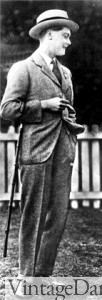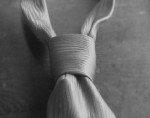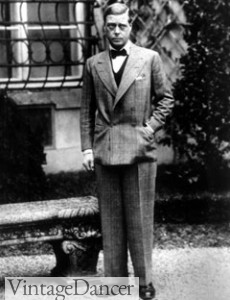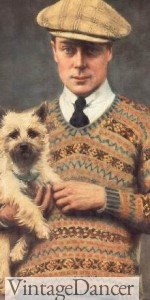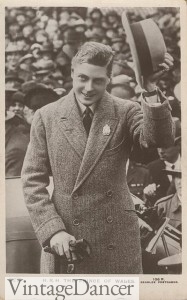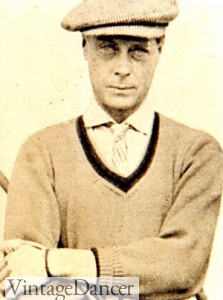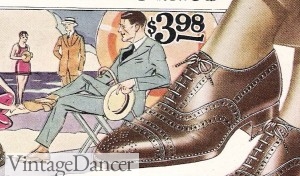“The average young man in America is more interested in the clothes of the Prince of Wales than in the clothes of any individual on earth.” – Men’s Wear
If American women looked to Paris for their fashions, men looked to Britain and none other than the Prince of Wales. He came to the USA on several occasions promoting the British clothing trade by wearing almost all British made clothes. What wasn’t British born was adopted from his many world travels. From large cities or tiny fishing villages or anywhere in between, he introduced hats, sweaters, and materials to an industry craving anything new and unusual.
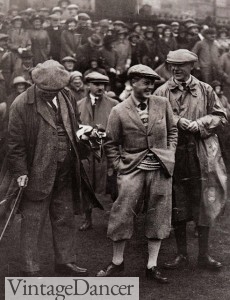
The Prince of Wales, trendsetter of plus fours, Fair Isle sweaters, flat caps, and argyle socks both on and off the golf course.
When he visited the USA in 1919 and 1924, reporters followed him everywhere, photographing and noting every detail of this clothing. He was athletic and sporty which appealed to young men, and quite handsome which appealed to women. In Britain and the USA, clothing shops put up signs on all clothing styles “Worn by the Prince” to increase sales. Nearly overnight, Americans adopted his style and everything he wore from Argyle socks to brown shoes (previously thought of as deplorable to wear with suits), knickers, and red ties.
In the process of adopting British fashion, many items underwent an Americanization. As F. Scott Fitzgerald put it, “With Americans ordering suits by the gross in London, the Bond Street tailors perforce agreed to moderate their cut to the American long-waisted figure and loose-fitting taste, something subtle passed to America, the style of man.” (This Side of Paradise)
A 1950 article in Men’s Wear recaptured the looks that the prince popularized during the 1920s:
1. By wearing a big Panama hat at Belmont Park, Long Island, where more than 50,000 people saw him, he revived the wearing of Panama hats in this country at a time when they were out of fashion.
2. The Windsor knot tie (the four-in-hand that is tied so as to make a large knot) and the widespread collar which was originally designed for this knot.
3. The double–breasted jacket with the long roll lapel. This style became known as the Kent, named for the prince’s brother the Duke of Kent. Actually, the Prince of Wales was the first to wear it, but encouraged the description out of deference to his younger brother. This is the jacket on which the lapels roll to the bottom button. (He was also a big fan of tweed suits.)
4. The Fair Isle sweater. This a the very colorful patterned sweater, with each horizontal row having a different pattern from the other rows. The prince was visiting the Fair Isles, just off the Scottish coast, in the ’20s, at a time when the natives were undergoing an economic depression. Told that if he appeared on the golf links wearing one of these native products and permitted the news cameramen to photograph him, it might materially help the islanders’ market, he consented gladly. Almost immediately after the pictures made the newspapers, the crofters were swamped with orders for their hand-knit sweaters. These subsequently sold in the finest shops in America for as much as $35 each.

Unusual black bow tie and white vest with a tuxedo jacket
5. The white waistcoat worn with black dinner jacket. Up to 1919, this combination had not been in either England or America, but following World War I, with nearly all of Europe mourning its dead, the prince came to feel that anything he could do to partially relieve the monotony of black would be well worthwhile. Thus he substituted the white waistcoat.
Others followed his lead; King Alfonso of Spain, for instance, and well-dressed Americans who were frequent visitors to London — men like Anthony Drexel Biddle and William Goadby Loew. Soon, it spread to the U. S. Until the middle and late ’20s, black evening waistcoats were seldom seen on our better dressed men.
6. The Guards overcoat. Though this was a favorite style of coat with all of England’s smartly dressed Guardsmen, it remained for the prince to accelerate the demand for it in America. Following visits in 1919 and in 1924, the popularity for this coat spread perceptibly. (Traditionally, guards coats are navy blue, very wide lapels, and a half belt on the back.)
7. Sportswear of the seashore resort type. Many of the various styles of sport shirts and slacks that became popular in this country were first worn by and photographed on the Prince of Wales at fashionable resorts along the French Riviera. The dark blue linen sport shirt and the fisherman’s red line slacks are notorious examples.
8. Brown buckskin shoes. On one visit, he appeared at a big polo match at Meadow Brook, Long Island, wearing brown buckskin shoes with his chalk-striped flannel suit, the only man at the game so shod. Brown buckskin shoes were new, but the next year hundreds were seen at Meadow Brook.
The Prices of Wales had many more influences on fashions for the wealthy classes, but also the poor classes, who especially liked his casual sportswear. Most menswear came from Britain, was adopted and modified by the USA, and returned to Britain again for more modification. Together, the two countries made menswear what it was in the twenties — and it all started with the Prince of Wales.
Debbie Sessions has been teaching fashion history and helping people dress for vintage themed events since 2009. She has turned a hobby into VintageDancer.com with hundreds of well researched articles and hand picked links to vintage inspired clothing online. She aims to make dressing accurately (or not) an affordable option for all. Oh, and she dances too.
